Not every person can understand why white spots appear on the skin, what they are and how to remove this disorder.
Such a formation may begin to itch, peel, itch and become covered with small round scales or, conversely, not manifest itself at all.
Lesions can be on the skin of the arms, hands, fingers, and to cure them, it is not enough to use conventional anti-fungal remedies - the spots may mean that there are disorders in the body.
Causes of white spots
When white spots appear on the skin, it is necessary to understand why they began to appear, whether only the skin of the face or hands and body is affected, and whether the disease is accompanied by any additional symptoms. Changes in pigmentation cause significant discomfort - it is always noticeable to others and therefore its treatment is This is, first of all, an aesthetic aspect.
All causes are divided into pathological, requiring specialized therapy, and non-pathological, which can resolve on their own or do not require specialized therapy. Pathological causes include the following:
- vitiligo;
- pityriasis (varicolored) lichen;
- leucoderma.
Doctors consider the following disorders to be non-pathological reasons:
- idiopathic hypomelanosis;
- pityriasis alba;
- non-pigmented nevi;
- incorrectly composed diet.
Note! Only a qualified dermatologist can identify the exact cause after a thorough examination and examination of the patient. Self-diagnosis can lead to a distortion of the treatment regimen, which can provoke a worsening of the condition.
Pathological causes
When the dermis on the hands and body becomes light, begins to turn white, white spots appear on the skin, it is not enough to know what the disease is called. Understanding what this disease means helps you create the right treatment strategy.
Vitiligo
A hereditary disease characterized by the appearance of depigmented areas on the surface of the skin. The area of the face, neck, limbs and genitals is predominantly affected. Less commonly, the disorder occurs on the skin of the torso. Such areas become more noticeable in the summer, when the bulk of the skin darkens under the influence of melanin. There is no pigment in the white areas.
Apart from changes in tone, the pathology does not manifest itself in any way - the areas are completely painless and do not cause any discomfort. When a spot appears in the hairline area, the hair in that area loses pigment. The spots appear between the ages of 10 and 30 and occur with equal frequency in both men and women.
Pityriasis versicolor
A fungal infection of the skin, in which the fungus secretes special substances that break down the pigment in the affected areas. In rare cases, the pathology is accompanied by itching, but more often it is completely asymptomatic. The skin in the upper half of the body is mainly affected: face, arms, torso.
At the initial stages of the disorder, the plaques become pink, but gradually lighten. When tanned, they stand out from the rest of the skin because they lack melanin.
Leucoderma
A skin pigmentation disorder that can manifest itself under the influence of internal and external factors. It is characterized by a decrease in the intensity of melanin synthesis, which leads to the appearance of pale areas. There are several types:
- albinism - hereditary disorder of pigment synthesis;
- tuberous sclerosis - hereditary pathology, which is characterized by the formation of a large number of small plaques;
- halo nevus - a mole that is surrounded by an area of depigmented skin;
- post-inflammatory — pigmentation disorders that occur during remission after infectious skin pathologies;
- infectious — provoked by infectious pathogens (syphilis, leprosy, lichen);
- chemical — occurs in patients whose activities are associated with exposure to harmful chemical compounds;
- medicinal - manifests itself against the background of the use of various medications.
Other causes of white spots on the skin
If a patient develops white spots on the skin, the reasons for the appearance are not always pathogenic: color changes, peeling, a burning sensation under the plaques, their convex surface - all this has a diagnostic role. Treatment for small to medium-sized rashes may not be necessary as they may go away on their own., and therefore the scheme for how to treat such disorders contains only general recommendations.
Idiopathic hypomelanosis
The disorder is diagnosed mainly in patients over 40 years of age. Plaques are located on the skin of the limbs, neck, and face. They are small in size and have uneven edges. The skin in the affected area is smooth and has no peeling. Therapy includes the use of tretionin-based agents and corticosteroids.
Lichen alba
A disorder that occurs primarily in children. Tends to self-heal. It has unclear boundaries and is localized mainly on the shoulders, lateral thighs and cheeks. May occur against the background of atopic dermatitis.
Pigmentless nevus
A depigmented mole is often mistaken for a flat wart. Such a neoplasm is prone to malignancy and therefore requires rapid treatment. These lesions differ from the normal surface of the skin not only in color, but also in texture. To make an accurate diagnosis, you need to contact a dermatologist - he will examine the nevus under a special microscope and identify its exact size.
Poor nutrition
An unbalanced diet can also cause pigmentation disorders. With a deficiency of vitamins and microelements in the human body, the processes of synthesis of new cells are disrupted, which leads to the appearance of light areas on the dermis. If white spots appear on the skin of your hands in the winter-spring period, then this is almost certainly a sign of vitamin deficiency.
Note! Self-diagnosis, as well as self-medication, can lead to a worsening of the condition and provoke progression of the disease.
Treatment of light spots on the skin
The highest effectiveness is shown by therapy that involves getting rid of concomitant pathologies. This way, the body responds much better to the active ingredients in medications, which leads to increased effectiveness.
When spots and white dots appear on the skin of the hands and body, small red nodules under the skin, only an individually developed course of treatment can cope with such disorders. The dermatologist compiles it taking into account all concomitant pathologies and immediate causes of pigmentation disorders.
Treatment with Melagenin Plus
Contains calcium chloride and ethanolic extract of human placenta. The action of the drug is aimed at restoring normal cell activity and restoring melanin levels. The essence of the treatment is to apply the drug to depigmented areas. The duration of treatment is up to 6 months.
Removing light stains
The essence of the technique is to apply a special photosensitizing substance to the affected areas. After its use, the affected areas are exposed to ultraviolet radiation. The following drugs can be used to increase sensitivity:
More often, the positive effect of photochemotherapy is achieved when treating patients with dark skin. Procedures are carried out no more than once every 48 hours for 2 months. In 3-4 courses, complete restoration of pigmentation occurs.
Laser treatment
Laser removal is more precise than photochemotherapy and has a faster cure. This technique involves the impact of a special helium-neon laser on the affected areas.
The method allows you to get rid of old stains, against which most methods are powerless. Laser treatment is quite expensive and is accompanied by a high probability of burns.
Skin graft
For small lesions Surgical transplantation of healthy dermis to depigmented areas is allowed. This treatment technique is used in cases where therapy by other means has not given the desired effect. To prevent the transplanted area from undergoing depigmentation, it is exposed to a photosensitizer - this enhances melanin synthesis and improves survival rate.
Additionally, patients undergoing this operation are prescribed a course of vitamins E, C, B9, B12, as well as immunostimulating drugs. Taken together, postoperative medication helps improve survival and speeds up healing.
Whitening healthy skin
If light areas affect about 70% of the total skin area, a healthy skin whitening procedure is performed. It allows you to smooth out the difference between healthy and depigmented areas. The procedure uses special cytotoxic cells that destroy melanin.
Proper nutrition
Nutrition correction is not only a preventive, but also a therapeutic measure. To restore healthy pigmentation, patients are advised to avoid consuming the following products:
Foods high in zinc, copper and iron play an important role in the diet - these microelements take part in the process of melanin formation. To compensate for the deficiency, you can use pharmacy vitamin-mineral complexes or enrich the menu with products containing them.
Products containing iron
Ferrum is necessary for normal cellular respiration and normalization of the process of skin gas exchange. Iron deficiency leads to anemia - insufficient number of red blood cells that transport oxygen from the lungs to the tissues. High iron content in the following foods:
Products containing zinc
Zinc deficiency leads to frequent dermatitis, hair loss, and deterioration in the general condition of the body. With a lack of zinc, the patient's immunity decreases, which leads to the rapid progression of pathologies. Due to a lack of zinc, recovery processes slow down. A large amount of microelement is found in the following products:
- blueberry;
- mushrooms;
- oysters;
- nuts;
- Brewer's yeast;
- pumpkin seeds.
Products containing copper
Copper deficiency affects hormonal levels and slows down metabolic processes in the body. It is because of the deficiency of this microelement that patients experience deterioration in hair condition., pigmentation disorders and premature skin aging. High copper content is observed in the following products:
Prevention
You can prevent the appearance of whitish areas on the body by following a number of recommendations:
- balanced diet;
- maintaining personal hygiene;
- use of sunscreens;
- limiting contact with aggressive chemicals;
- taking vitamin-mineral complexes in the winter-spring period.
The appearance of light spots on the skin is a phenomenon that requires extreme care. Violation of natural pigmentation is a sign of disruption of the normal functioning of the body. The sooner therapy begins in case of white spots on the skin, the more effective it will be.
White spots can appear on the skin for various reasons. These include both serious diseases of internal organs and external factors: burns or skin injuries. If pathology appears, you should consult a doctor and find out why white spots appear on the skin, and then begin complex treatment. The sooner therapy is prescribed, the greater the likelihood of complete recovery.
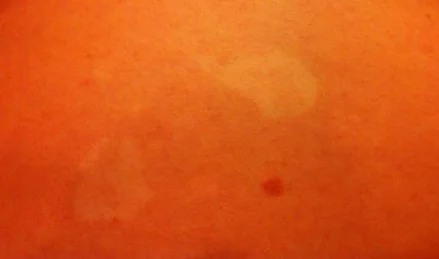
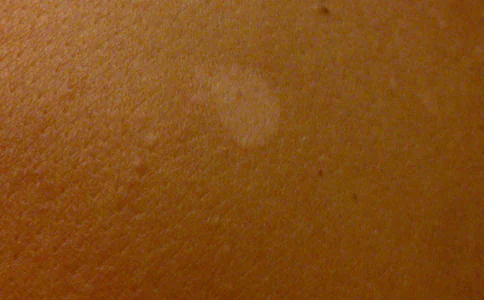
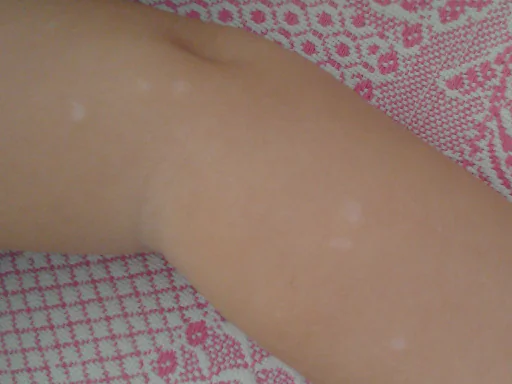
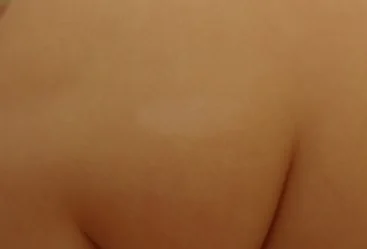
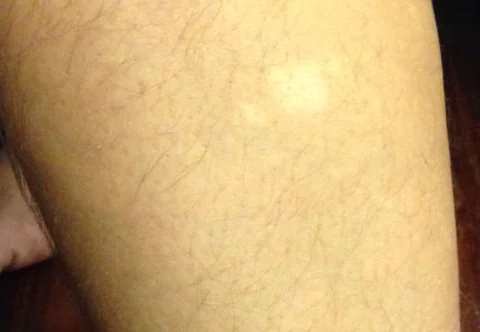

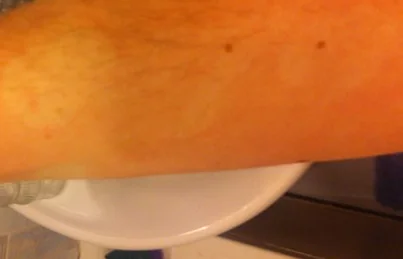
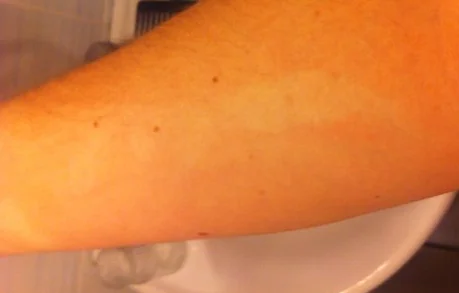
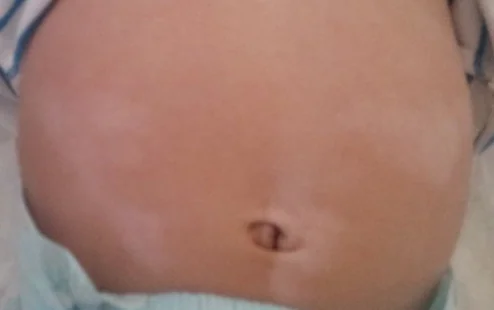
Causes of white spots on the skin
In medicine, there are several main factors that increase the likelihood of white spots appearing. These include the following:
- Diseases of some internal organs - the thyroid gland, kidneys and adrenal glands, pathologies of the intestines, stomach, liver;
- failure of the immune system - a special condition when the immune system begins to destroy the melanocytes that the body produces;
- hereditary predisposition to vitiligo;
- intestinal candidiasis;
- pregnancy;
- deep mycoses;
- constant being in a stressful state;
- infectious diseases;
- Fungi cause skin diseases, followed by white spots.
Sometimes white spots appear on the skin as a result of external factors:
- injury;
- sunburn - in these cases, light pink spots appear on the skin, then light pigmentation appears on it;
- prolonged contact with chemicals, some types of synthetic materials.
Types of white spots
- Vitiligo is a skin disease characterized by the destruction of melanocytes. The disease has not yet been fully studied. It is believed that white spots appear due to disruptions in the immune system, disruption of the endocrine gland, or the pathology is inherited. Constant stress contributes to the development of pigmentation.
This is a serious disease in which the white spots have smooth borders. As the disease progresses, light spots on the skin of a child or adult grow and merge with each other. Vitiligo appears all over the body: face, arms, neck. The spots are difficult to miss; they cause great psychological discomfort, especially if they are on the face.
- Pityriasis versicolor is a disease caused by fungi. The spots are slightly darker than with vitiligo, but also do not tan in the sun. With prolonged exposure to sunlight, pigmentation becomes lighter and more distinct. With pityriasis versicolor, not only light, but also numerous reddish spots appear, which constantly increase in size. Light spots on the skin are flaky and irregular in shape.
- Leukoderma is a disease in which the production of melanin disappears or is disrupted. The most common is syphilitic leukoderma caused by syphilis. The main symptom is small round white spots appearing on the body.
In more rare cases, white spots on the skin appear due to other diseases. These include:
- non-pigmented nevus - a birthmark or mole on the skin is not only red-brown and red-white. Colorless pathology also occurs. These spots can provoke the development of a malignant neoplasm (melanoma);
- Pityriasis alba – the disease is characterized by uneven white circles all over the body. Usually appear in children and adolescents. At first, the spots on the child’s skin have a red tint, then they turn white;
- hypomelanosis of the idiopathic form - with this pathology, small spots on the skin of a light color no more than five millimeters in size appear on the body. Pigmented lesions appeared on the arms, shoulders, face, and legs. Initially, the spots do not cause any sensation, but if there is no treatment, they begin to peel off.
Photo of white spots on the head
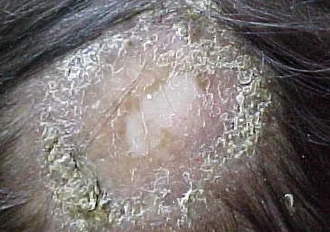
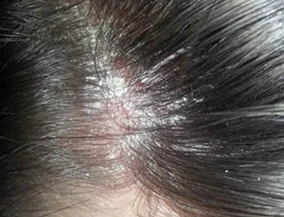
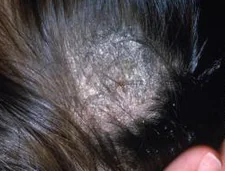
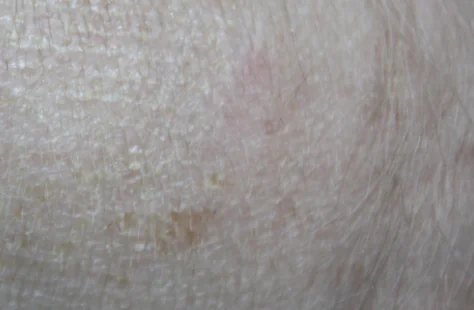
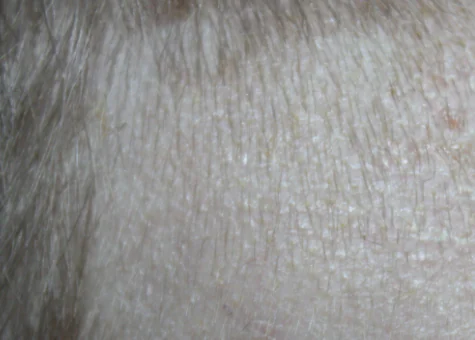
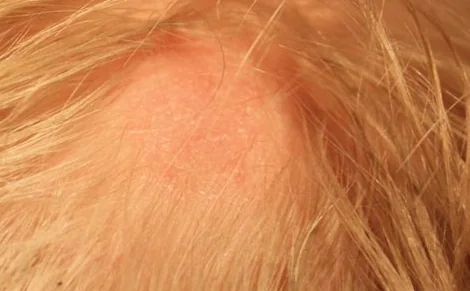
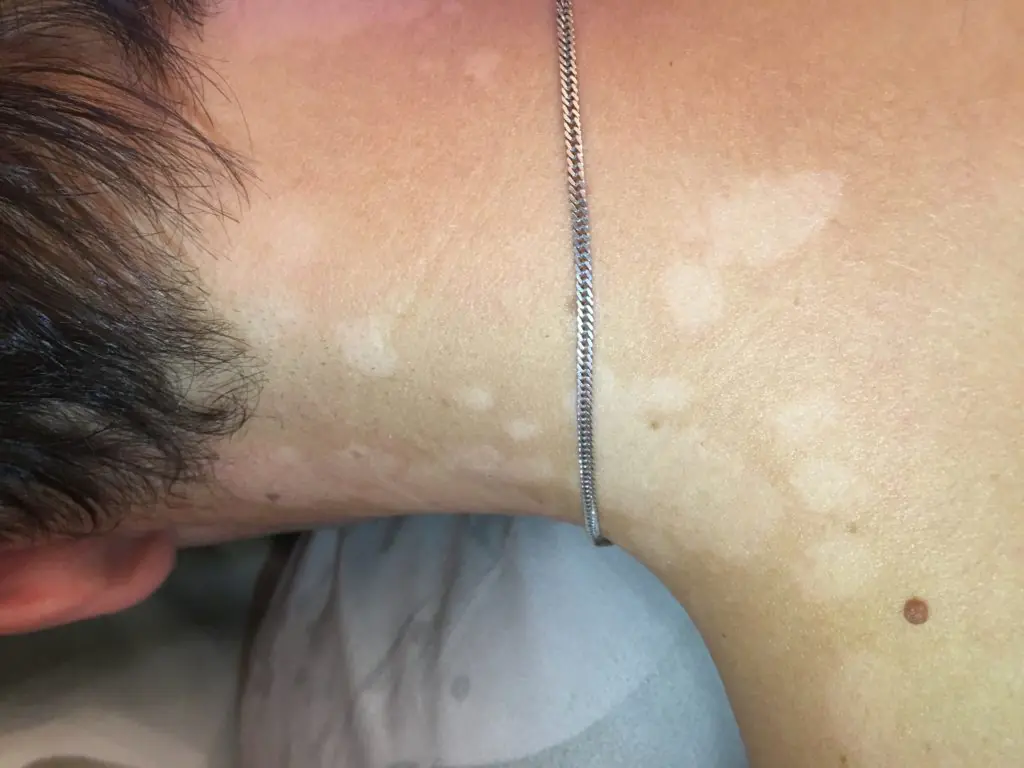
Treatment
Therapy depends on the underlying disease. After contacting a dermatologist, the doctor will diagnose white spots on the skin and find out the nature of their appearance and tell you the name of the disease. In each situation, treatment must be comprehensive and selected individually.
It depends on the form and degree of neglect of the disease, the general condition of the patient, concomitant diseases, and age. If a white spot appears on the skin of a child, the treatment will differ from the treatment methods for adults.
PUVA therapy - what is it?
Removal of white spots on the skin of the arms, face and torso caused by vitiligo is carried out using a special procedure - photochemotherapy. It is effective for people with dark skin. The patient is taking medications that increase the skin's sensitivity to light. These include: Clotrimazole, Psoberan, Melagenin, Methoxelan. Then the patient visits a special solarium and receives a certain dose of ultraviolet radiation.
How to treat white spots on skin with laser
During the procedure, a helium-neon laser is used. The method is similar to PUVA therapy, but a higher dose of radiation is delivered. The method is quite effective and copes even with old light spots. The main disadvantage is the high likelihood of getting burns. Treatment of white spots on the skin with laser is a rather expensive procedure.
Skin graft
The operation is performed for vitiligo. The method is used only if a small light spot appears on the skin, and when other methods of therapy have not led to any result. Often, donor tissue is subjected to PUVA therapy, since after transplantation the skin may lose pigments.
After the operation, the patient is prescribed immunomodulators and vitamin therapy. Patients are recommended to take a course of vitamins C, B12 and B9.
What does traditional medicine say?
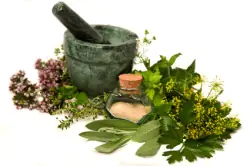
Home methods can be used in parallel with formal, medical therapy and diet. Any prescription should be used after diagnosis (when a person knows why white spots appeared on the skin, what kind of disease it is and what its causes are). Initially, you should consult with your doctor.
- St. John's wort helps with vitiligo. Take a teaspoon of the dry plant and brew it with two hundred milliliters of boiling water. Dosage – one tablespoon three times a day. The course of treatment is three weeks, then take a seven-day break and repeat the therapy.
- Mix ground black pepper with baking soda. Take both components in equal quantities. Regularly rub the mixture into white spots on the skin of your hands, face and entire torso. With constant use of the product, the skin becomes natural in color.
- St. John's wort ointment promotes recovery from vitiligo. Mix dry herbs and olive oil, taken in proportions of 1 to 10. Soak for half an hour in a water bath. Store the finished ointment in a dark glass container. Apply the product to the affected areas. It is recommended to use it together with a decoction of St. John's wort.
- To get rid of pityriasis versicolor, sorrel ointment will help. Mix fresh sorrel pulp with heavy cream or sour cream. Rub into the affected areas, the course of treatment is ten days.
- In the treatment of advanced pityriasis versicolor, immortelle is effective. Take 40 grams of inflorescences and pour two glasses of boiling water. Leave the broth for two hours, then strain. Lubricate white spots on the skin of the face and entire body with this decoction.
- Pityriasis versicolor is afraid of boric acid. Dissolve the powder in boiling water according to the instructions. Regularly wipe age spots with a warm solution of boric acid. You will soon notice an improvement.
- Aloe juice helps with white lichen. Cut a fresh aloe leaf lengthwise. Regularly apply fresh juice to the affected areas of the skin.
- Herbal infusion is effective in the treatment of white lichen. To prepare it, you need to mix a teaspoon of celandine, wormwood and tansy herb. Pour the mixture with a glass of boiling water and leave for ten hours in a warm place. Make lotions from the decoction three times a day. Don't forget to strain the infusion.
- If white spots appear on the skin after sunbathing, then it is necessary to minimize exposure to direct sunlight. Sometimes the pathology is provoked by sunscreen, in which case it needs to be changed to another.
How to treat white spots with medical ointments
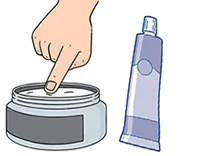
Vitiligo is treated with topical hormonal creams. They can only be used as prescribed by a doctor. The main ointments include the following:
- Prednisolone is a hormonal corticosteroid. Use according to the instructions, which contain contraindications. Has anti-inflammatory and anti-allergic effects;
- Betamethasone Dipropionate is a synthetic corticosteroid that has an anti-inflammatory effect. It is used once a day in the form of an application. May cause dryness and redness of the skin;
- "Clobetasol propionate" belongs to the group of glucocorticoid drugs. The cream is applied to a light spot once a day, in a thin layer. Used from two to six months.
Diet
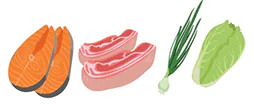
A special menu allows you to prevent white spots under the skin, and in case of illness, it will speed up the healing process. The diet should include dishes that accelerate the production of melanocytes. Copper and iron with zinc are responsible for production.
With copper deficiency, hematopoiesis worsens, and a person quickly becomes overtired. A significant amount of this trace element is found in cucumbers, cheese, rose hips, pork liver and cocoa powder.
Zinc is essential for normal cell functioning. With its deficiency, appetite decreases, skin diseases and spots of light brown, dark or white shade develop. Zinc-rich foods: pumpkin seeds, sunflowers, nuts, mushrooms, blueberries.
With iron deficiency, the skin, mucous membranes, gastrointestinal tract, and hematopoiesis are primarily affected. A large amount of this element is included in: liver (pork and beef), eggs, raspberries, legumes (peas and beans), prunes, buckwheat.
It is also recommended to exclude hot and spicy foods from the menu - onions, garlic, ginger, hot peppers.
Conclusion
Skin pathologies worry many people. Pigmented lesions cause psychological discomfort, especially if they are in open areas (for example: white spots on the lips under the skin, on the forehead or cheeks).
Doctors warn! Shocking statistics - it has been established that more than 74% of skin diseases are a sign of parasite infection (Accarida, Giardia, Toxocara). Worms cause enormous harm to the body, and the first to suffer is our immune system, which should protect the body from various diseases. The head of the Institute of Parasitology shared the secret of how to quickly get rid of them and cleanse your skin, it turns out that’s enough. Read more .
They appear for various reasons, both internal and external factors. If a light spot or several spots occur, it is recommended to consult a doctor immediately.

Modern girls are ready to make any sacrifice just to have beautiful and healthy skin with an even, flesh-colored color and characteristic smoothness. However, due to poor lifestyle, poor nutrition and polluted environment, such skin is a real rarity. Therefore, over time, the face and other parts of the body lose their attractive elasticity, and the production of melanin, which is responsible for the skin tone, is significantly reduced. If you notice white spots on the skin, perhaps this indicates the development of a pathological process or is one of the symptoms of more serious diseases, including genetic or allergic ones.
Discolored spots indicate loss of pigmentation, and they can appear on any part of the body, having chaotic sizes and shapes. Their appearance does not cause pain or great concern, so the main nuisance is only of an aesthetic nature. Against the background of dark or tanned skin, such spots stand out very intensely. They can appear in people of all races, regardless of skin tone, gender and other individual characteristics. The progression of the problem causes a significant decrease in self-esteem and leads to psychological discomfort.
Why do white spots appear?
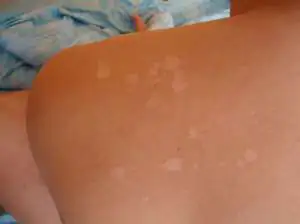
White spots on the body are a very common problem that occurs when the skin becomes discolored due to decreased melanin production. Predisposing factors include:
If we talk about internal reasons, they are represented by the following points:
- Hereditary factor.
- Diseases of the kidneys, liver, intestines and stomach.
- Hormonal imbalances and dysfunction of the hypothalamus and pituitary gland.
- Skin diseases of fungal origin.
- Disruptions in the functionality of the endocrine system and thyroid gland.
- Severe viral infections.
- Lack of certain vitamins and microelements.
- Chronic stressful situations.
Among the external factors:
- Physical damage that has led to deformation of the skin.
- High sensitivity to various household chemicals, synthetic fabrics and other materials.
- Long-term work in hazardous industries and forced contact with toxins.
- Prolonged exposure to ultraviolet rays and tanning.
In most cases, such pigment defects appear due to the progression of a pathological process in the body. To make a correct diagnosis, it is necessary to undergo a comprehensive examination and evaluate the results. If the cause has been discovered, begin to fight it, and do not hide external manifestations and symptoms. In addition, you should first consult with a dermatologist, who will offer to undergo a comprehensive diagnosis and give valuable advice to combat the problem.
There are many diseases, which provoke the appearance of spots in different parts of the body. To know how to deal with them, you should deal with each one individually in advance.
Diseases of fungal origin
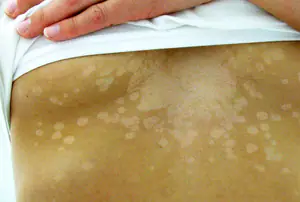
Among the most common and dangerous causes of loss of natural color and pigmentation is a chronic skin disease - pityriasis versicolor. The causative agent of this fungal infection is yeast, which rapidly forms colonies on the skin and produces azelaic acid, which affects melanocytes and blocks the production of melanin. As a result, the skin becomes covered with small round or oval white spots with clear boundaries. The deformation is especially noticeable against the background of tanned skin. Subsequently, the defect increases in size or completely merges, covering large areas. Sometimes the spots spread to the chest, shoulders, neck, back and even groin.
Fungal mycelium continues to loosen the surface layer of the epidermis, so over time the spots begin to itch and flake. However, the inflammatory response is still absent. During the cold season, the defect becomes dark, but after visiting the solarium, everything returns to its original place. A similar situation is observed in the summer, when after prolonged exposure to ultraviolet radiation the spots become especially pronounced. Because of these features, pityriasis versicolor is often called “sun fungus,” which is very common in people living in hot and humid climates.
The fungus cannot be transmitted to other people, since it is formed only due to a weakened immune system, excessive sweating, endocrine system disorders or disruptions in the natural microflora, which can occur with intensive use of antibacterial cosmetics.
At the same time, many experts argue that the risk of infection with pityriasis fungus is also present upon contact with a sick person. Therefore, if the disease is in an acute phase, take a number of precautions by providing the patient with dishes, bedding and hygiene products.
If a fungal infection has been detected, the dermatologist may be able to formulate a suitable treatment regimen, which is based on the use of local antifungal agents in the form of ointments and creams. In advanced cases, complex therapeutic treatment cannot be ruled out when it is necessary take these popular medications:
Pityriasis rosea
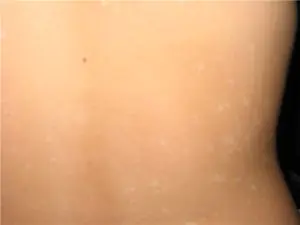
The disease is not transmitted by airborne droplets or any other route, and unpleasant round spots appear due to exposure to viral diseases with reduced immunity. Experts believe that the problem is caused by the herpes virus, and at the initial stage of development a maternal plaque is formed, from which screenings soon emerge, presented in the form of pink spots with clear boundaries.
The spots are not capable of causing pain, so their localization falls on the site of natural folds. After the folds disappear, defects remain on the body. For pityriasis rosea, treatment methods are not as serious as in the previous case. And if you approach the therapeutic course correctly, then all symptoms will disappear within 6-8 weeks. The therapeutic regimen may include the following:
- Glucocorticosteroid ointments.
- Chatterboxes.
- Antibiotics.
- Antihistamines.
- Vitamin complexes.
- Calcium-based preparations.
Lichen alba
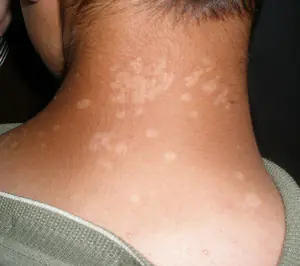
Another common disease is pityriasis or pityriasis alba. The first symptoms are represented by the appearance of round spots of pale pink color on the face, neck and hands. In the early stages, the spots are convex, but soon they become flat and white in color. In the summer, the defect is especially noticeable, and especially against the background of tanned skin. When winter comes, the spots begin to peel off, and then the patient experiences unbearable itching and an inflammatory reaction.
The pathology especially often attacks children and adolescents, and the maximum distribution is present in areas with a warm and humid climate.
To return natural pigmentation to the skin after pityriasis, you should undergo a therapeutic course for several months, using ointments with a low content of steroid components, as well as a number of drugs based on pimecrolimus.
Vitiligo
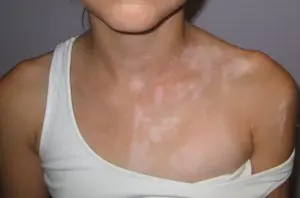
The disease vitiligo often leads to depigmentation of the skin. Why this disease appears and what causes it is not completely known. However, most experts are of the opinion that vitiligo is a dangerous autoimmune disease in which the immune system begins to independently destroy healthy cells that produce melanin (the hormone responsible for pigmentation). As a result, the skin is covered with milky white spots, and there are no unpleasant effects, itching or other troubles. Among the main risk factors:
- Genetic predisposition.
- Autoimmune and hormonal imbalances.
No one is immune from the sudden appearance of white spots due to such a disease. Most often they are localized in open areas of the body, in the armpits and groin. They can be found on the skin near scars, scars or moles.
There are still no effective remedies and drugs to combat vitiligo, although experts have developed a number of medications that reduce the progression of symptoms of the disease.
During treatment, it is necessary to use corticosteroid ointments and antioxidants, which will promote the active production of melanin. In addition, physiotherapeutic methods (PUVA therapy, laser and placental therapy) are especially popular. The techniques activate melanocytes, improving metabolic processes and reducing the severity of spots.
Among the most effective solutions against the symptoms of vitiligo is photochemotherapy with psoralen. The treatment course consists of taking psoralen in the form of tablets or ointments, after which the skin is treated with ultraviolet light. To carry out the procedure, you must visit a specialized clinic where all the necessary equipment is available. However, the cost of treatment is quite high, and the risk of developing serious complications is very high.
Therefore, before starting therapy, the patient must undergo a comprehensive examination to determine possible contraindications.
Experts may attribute another procedure - depigmentation, but it will be effective only in cases where the spots cover more than 50 percent of the skin. For treatment, it is enough to apply special preparations to the skin that have a lightening effect. With their help, you can discolor those areas with pigment.
White spots on the body - how to treat in children

If you are concerned about the question: “How to get rid of white spots on the skin,” be prepared to take drastic measures and work hard. Treatment should be especially thorough when spots appear in children. The fact is that children's skin is very delicate and sensitive, so aggressive methods are ineffective and may even be harmful.
Among the most common diseases that cause the formation of age spots in children, hypomelanosis occupies a leading position. The problem is dyschromia of the superficial (horny) layer of the epidermis, which progresses in the early stages of the baby’s development, or after severe diseases of infectious origin. When treating hypomelanosis, you should use highly effective drugs - retinoids, which can slow down the process of depigmentation. And it is also important to perform a number of cosmetic procedures.
In addition, children often suffer from tumorous sclerosis. With this disease, the face becomes covered with large white spots, the diameter of which reaches three centimeters. The main location is concentrated on the face, skin of the arms and legs. In this case, the spots may indicate a more serious pathology, causing additional complications, including:
- Damage to internal organs.
- Mental retardation.
- Epilepsy.
Like adults, children are exposed to pityriasis versicolor, pityriasis alba or rosea, as well as many other diseases that are more serious in nature.
If you identify alarming symptoms and changes in pigmentation, show your child to a specialist as soon as possible so that he can establish a diagnosis and select quality treatment. Only with this approach can the problem be solved in a short time and without surgical intervention.
To prevent white spots from sunburn, limit your exposure to sunlight. Sunbathe in the morning or late afternoon, when there is little sun activity. The best time for sunbathing is period from 8 to 11 am, or after 4 p.m. At the same time, it is important to moisturize the skin with the help of special creams and lotions that will prevent overdrying.
Follow the rules of skin care, and you will not have to suffer from various problems and diseases.



